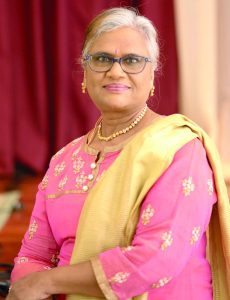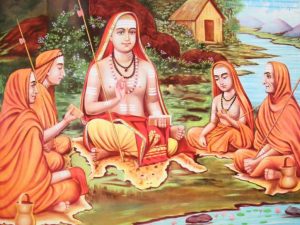Indians are most argumentative when it comes to agreeing on the nature of Reality, including their identity as “self” or “atman.” Several schools of philosophy emerged over time – some theistic and a few atheistic – as they discussed the nature of Reality, including questions of atman (individual consciousness), paramatman (universal consciousness) and prakriti (matter).
The tradition of debating and refining the instruments of valid knowledge is a vigorous one in India. And so, several schools of philosophy emerged over time.
Generally, one may say that the individual (atman, or individual consciousness) is innately divine. It has a relationship with the Highest Reality, or paramatman. It is confined in a body (jivatman) in the material world, and tends to see everything through the material senses. When it loses its ability to make rational decisions, it becomes lost or fallen in divinity. Bhagavad Gita (2:58-63) outlines this process.
How does one rise into divinity then? How does one reclaim one’s “self”, or true nature? There are many teachings on this, depending on the school of philosophy to which one belongs.
The renowned eighth-century Indian theologian and philosopher Adi Sankaracharya, in one of his philosophical treatises named Bhaja Govindam, taught how to reclaim divinity. The text is also called the Moha Mudgara, or the Hammer that destroys Delusion.
He is a towering philosopher who unified diverse philosophical thoughts into the Advaita doctrine that spread like wildfire across India. He was a great reformer, and attained samadhi when he was thirty-two years old.
The philosophy of Advaita Vedanta states that only the Highest Reality (called Nirguna Brahman) exists and is eternal, and other realities like atman and prakriti are not real (in the sense of not being infinite). The individual atman is not different from Brahman. The world is “relatively real.” This Highest Reality, or Nirguna Brahman, has no attributes, and is indescribable, eternal, omniscient, etc. It alone is absolute and infinite.
Advaita teaches that one needs to attain that state of consciousness. To arrive at that state of consciousness, where one is established in divinity, Sankara taught the most efficient path of Knowledge/Jnana. Bhaja Govindam is a rhythmic piece of sublime poetry praising Govinda, a personal deity. It prescribes surrender and devotion as preparatory stages for knowing Brahman. It calls on humans to ponder the impermanence of pride and attachment to family, wealth, youth etc. Death is inevitable. Therefore, one is advised to consider the finite vs the infinite, and the wisdom that would yield permanent happiness.
To rise from a fallen spiritual consciousness, to strive toward divinity during this lifetime, Sankara says to human beings, in Bhaja Govindam (verse 9), “Being in the company of good persons (saints) leads to non-attachment. Non-attachment leads to freedom from delusion. Freedom from delusion leads to awareness of Reality. The understanding of Reality gives rise to emancipation. Emancipation leads to the liberation of the atman (jivanmukti) while still alive.
Therefore, the promise of emancipation, or liberation, or union with the Highest Reality is an achievable goal during one’s lifetime. Such jivanmuktis are free from the cycle of birth and death; i.e: they are liberated. This state of existence describes what happens when one rises in divinity. It is achievable in the here and now.
By Pandita Dr Indrani Rampersad (Vedic/Hindu Priest; Fellow in Advanced Studies, Hindu University of America; Journalist, and Women’s Activist. Email – [email protected])









